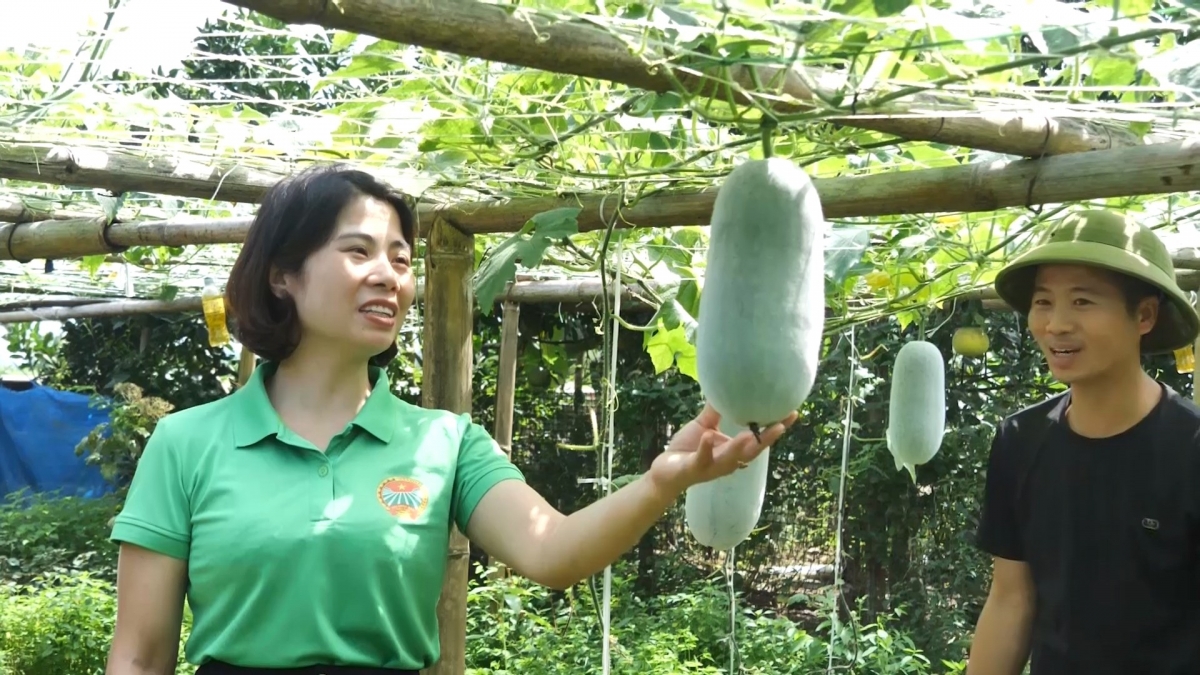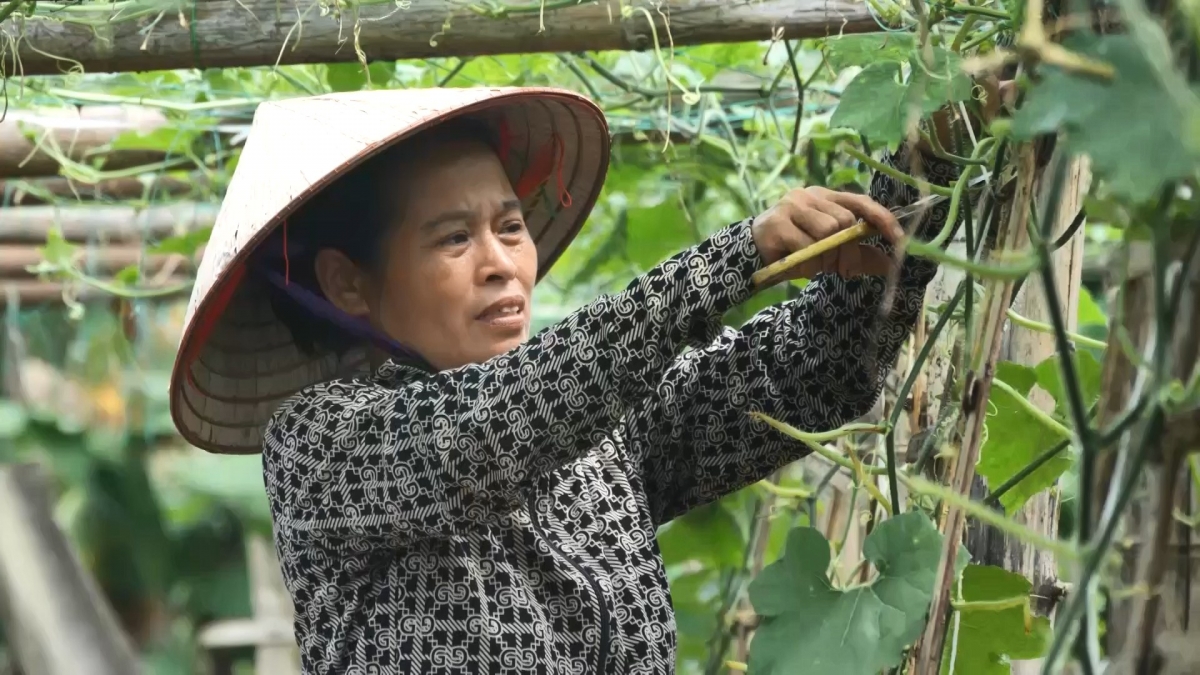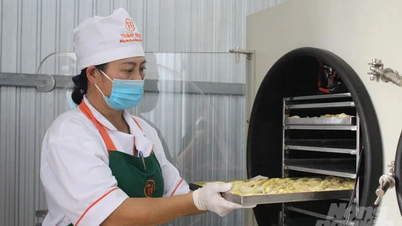The reality in Van Ban commune shows that the pumpkin growing model is a highly effective direction, promoting the development of household economy . A few years ago, 3,000m2 of land of Mr. Do Thanh Binh's family in Na Thai village was still only familiar with rice and corn, with low economic efficiency. Thanks to the propaganda of the Commune Farmers' Association and participation in technical training courses, Mr. Binh boldly made a bold decision: to convert the entire area of this ineffective land to pumpkin growing.

Mr. Do Thanh Binh's pumpkin garden is full of fruit.
From pioneer to impressive income
After nearly two years, that decision has borne fruit. Not only did he harvest the main crop with a yield of 4 tons, he also boldly grew an additional off-season crop. With a stable selling price, the squash has brought his family an impressive income of about 160 million VND per year. This is a clear demonstration of the effectiveness of the squash growing model.
Sharing about the cultivation process, Mr. Binh admitted that there were initial difficulties, but the results were very encouraging: "The most difficult stage is the seedlings, which are greatly affected by insects, weather, etc. Once this stage is over, and the plants start climbing the trellis, it is also favorable. Growing this type of squash has a good yield, the product is easy to consume, I still want to expand the area further."
The spread of sharing and right direction
The spread of the pumpkin growing model not only comes from the sharing of experiences of pioneers like Mr. Do Thanh Binh, but also from the field trips and learning experiences organized by the local government. It was from the field trip to Bac Kan that the belief in pumpkin was sown.
Ms. Dang Thi Tuyet was one of the people who participated in that trip and was determined to bring the model back to apply at home. She said: "My family only did a pilot crop in the first season, but it was really fragrant and the quality was also good. When everyone tried it, they all commented that the squash was very fragrant and delicious."

Ms. Dang Thi Tuyet decided to grow squash after a learning trip.
Towards OCOP products, promoting sustainable economic development
The success of the pumpkin growing model is not accidental. It is the result of a systematic research and orientation process from the local government, aiming at the goal of long-term economic development.
Talking about future orientation, Ms. Trinh Thi Hoa, President of the Farmers' Association of Van Ban commune, emphasized the goal of making squash a key product, contributing to the overall economic development: "Currently, the market demand for squash is very large, so we also hope that people will continue to maintain and expand the model to be able to turn this plant into a commodity plant and be included in the list of local OCOP products in the near future."
Not only does the squash plant bring economic efficiency 7-8 times higher than traditional crops, but more importantly, it has contributed to changing the production mindset of Van Ban farmers. From small and fragmented production, people have known how to link up to create concentrated commodity production areas. The story in Van Ban has affirmed a correct direction, contributing to increasing people's income and promoting sustainable local socio-economic development.
Source: https://baolaocai.vn/bi-thom-van-ban-thay-doi-tu-duy-lam-giau-tu-dat-post885754.html


![[Photo] Ho Chi Minh City Youth Take Action for a Cleaner Environment](https://vphoto.vietnam.vn/thumb/1200x675/vietnam/resource/IMAGE/2025/11/04/1762233574890_550816358-1108586934787014-6430522970717297480-n-1-jpg.webp)

![[Photo] Panorama of the Patriotic Emulation Congress of Nhan Dan Newspaper for the period 2025-2030](https://vphoto.vietnam.vn/thumb/1200x675/vietnam/resource/IMAGE/2025/11/04/1762252775462_ndo_br_dhthiduayeuncbaond-6125-jpg.webp)

![[Photo] The road connecting Dong Nai with Ho Chi Minh City is still unfinished after 5 years of construction.](https://vphoto.vietnam.vn/thumb/1200x675/vietnam/resource/IMAGE/2025/11/04/1762241675985_ndo_br_dji-20251104104418-0635-d-resize-1295-jpg.webp)
![[Photo] Ca Mau "struggling" to cope with the highest tide of the year, forecast to exceed alert level 3](https://vphoto.vietnam.vn/thumb/1200x675/vietnam/resource/IMAGE/2025/11/04/1762235371445_ndo_br_trieu-cuong-2-6486-jpg.webp)

























































































Comment (0)